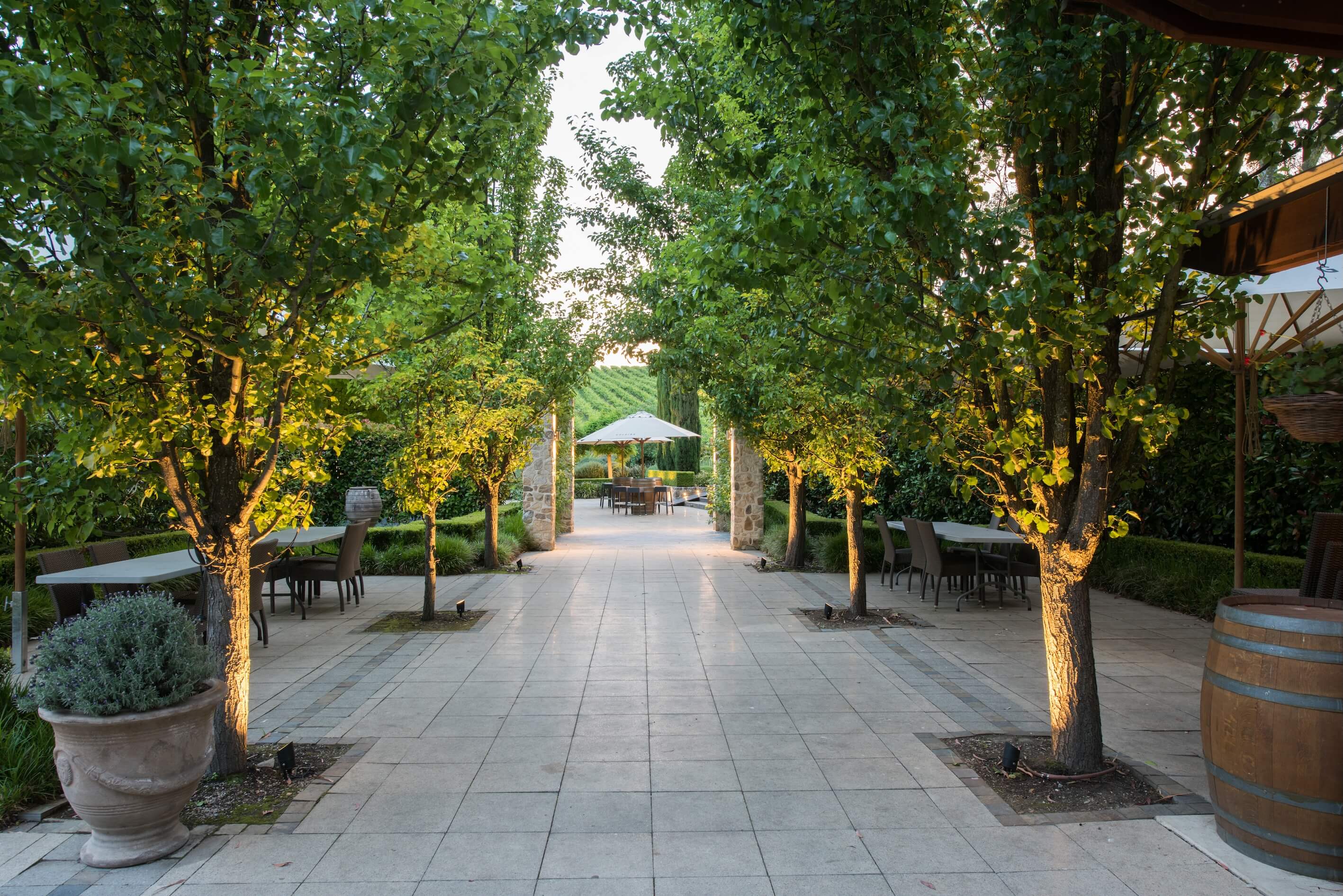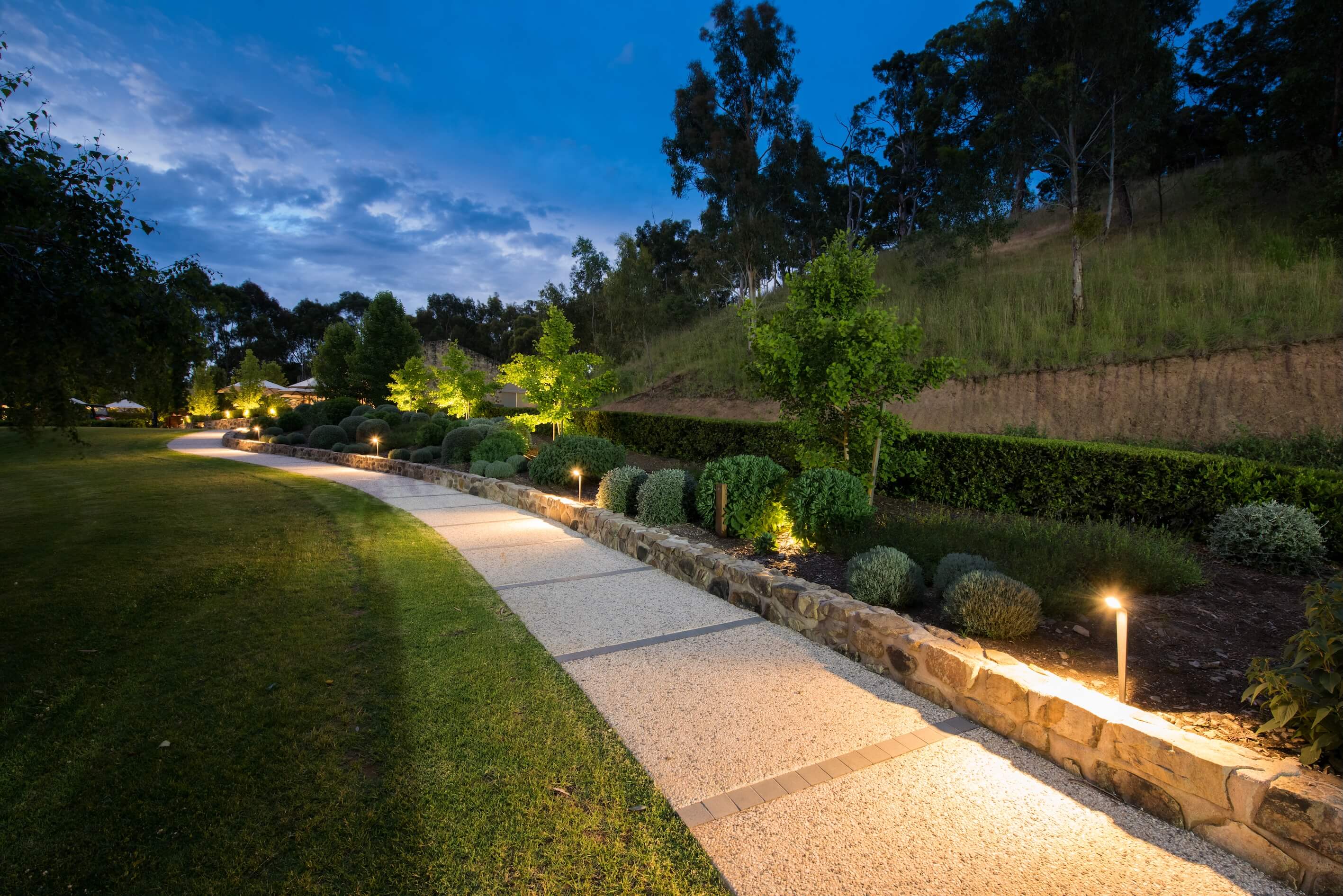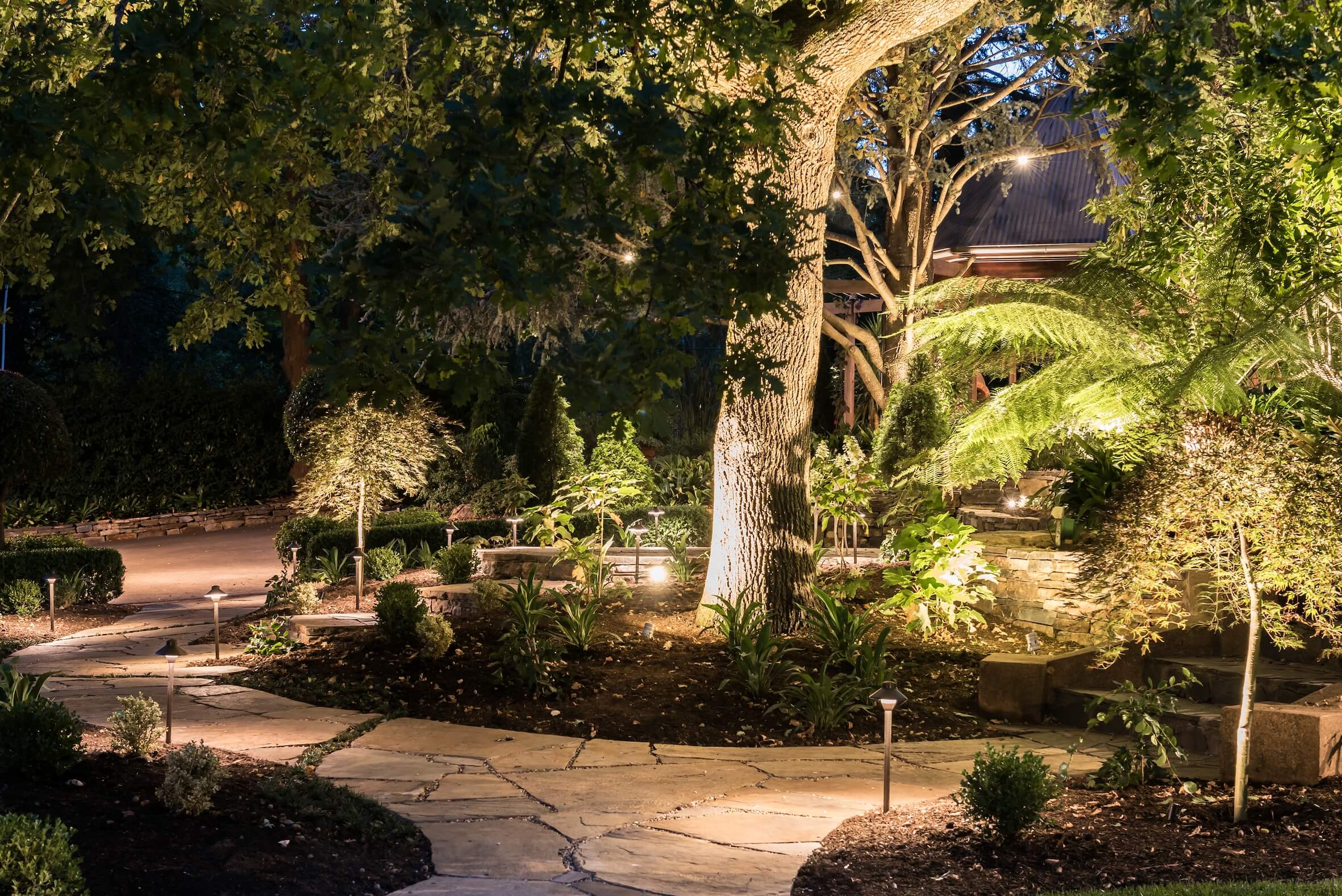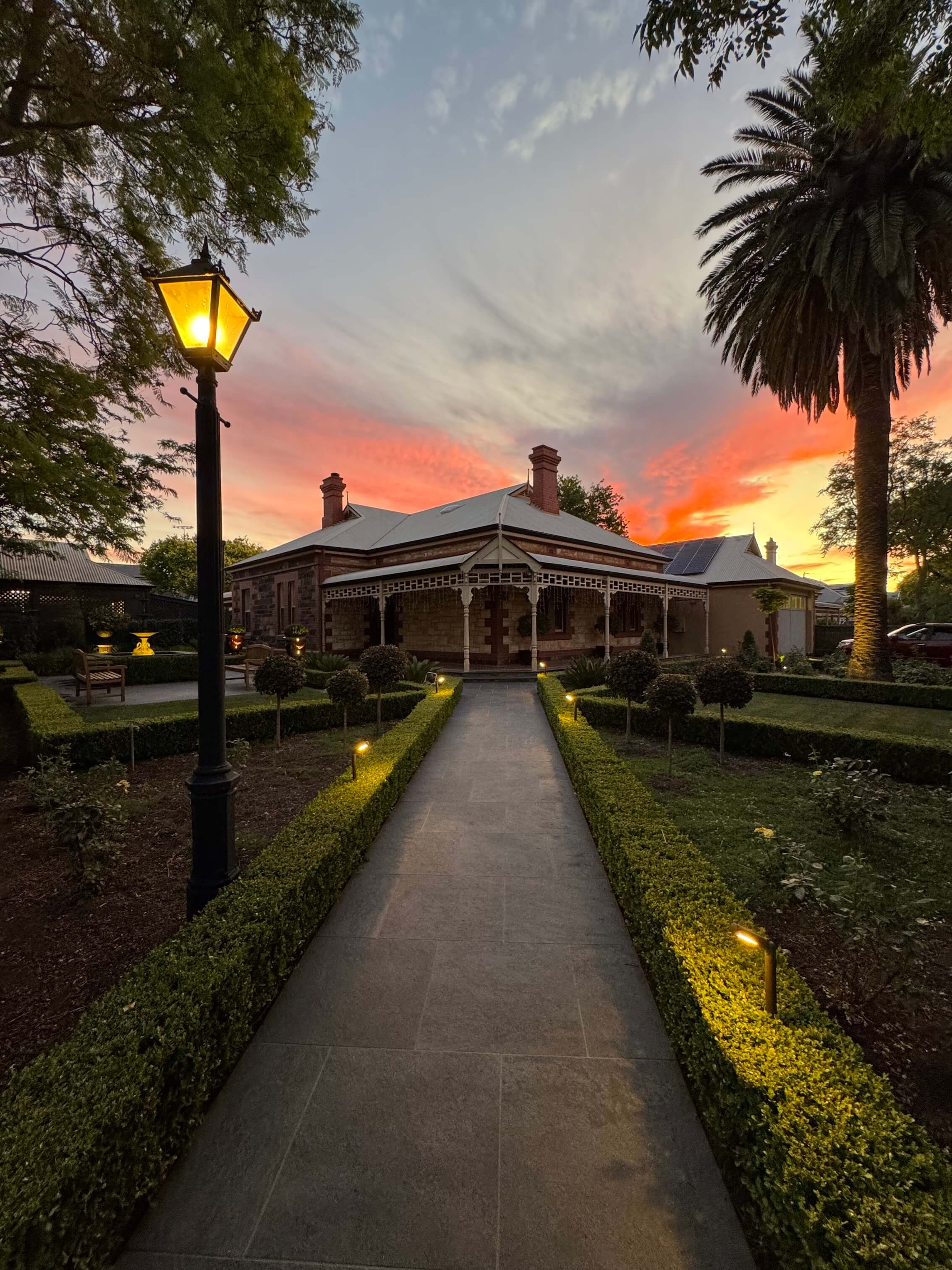Table Of Contents

A well-designed pathway lighting plan is one of the cornerstones of good landscape design. It goes beyond simply lighting the way to create structure, guide movement, and enhance the visual depth of your project after dark.
Thoughtful pathway lighting design improves both safety and ambience, helping outdoor spaces feel connected, comfortable, and refined. But achieving balance is key. Too much light, and you risk losing the landscape’s natural beauty or worse, creating a harsh “runway” effect.
Here’s how you can strike the perfect balance between safety and subtlety.

1. Get the Spacing Right
Consistent spacing is essential, but it shouldn’t feel rigid or repetitive. For most pathways, lights spaced 2.5 to 3 metres apart work best, depending on the fixture’s output and beam spread. Consider staggered placement along alternating sides of the path to avoid a tunnel effect and to complement planting and hardscape features. Good spacing ensures uniform illumination without over-lighting.

2. Control Beam Angles and Glare
One of the most common mistakes in pathway lighting installation is ignoring beam control and using fittings that shine more into your eyes rather than on the path. We prefer using lighting that produce well-defined pools of light which can be directed downward and across the surface to prevent glare and maintain visual comfort. At the end of the day it is the lighting effect we desire rather than making the light itself the feature.

3. Choose Fixtures That Blend, Not Compete
The best pathway lighting fixtures integrate seamlessly into the landscape. Use low-level fittings like bollards, path lights, step lights, or spike-mounted luminaires set among planting. These provide subtle guidance without drawing attention to the hardware. For a welcoming tone, select a warm white colour temperature (2700–3000K) that complements natural materials and foliage.

4. Prioritise Function Without Losing Atmosphere
Good landscape lighting design should guide movement through the garden while preserving atmosphere and hierarchy. Consider transitions between zones — such as paths, patios, and planting beds — to maintain a cohesive nighttime experience. Layered lighting, like soft uplighting on nearby trees or structures, can enhance depth and interest without increasing brightness levels.
When done thoughtfully, pathway lighting enhances both the functionality and aesthetic of a landscape. It provides safety, defines structure, and creates a warm, inviting atmosphere — all without overpowering the natural beauty of the space.



